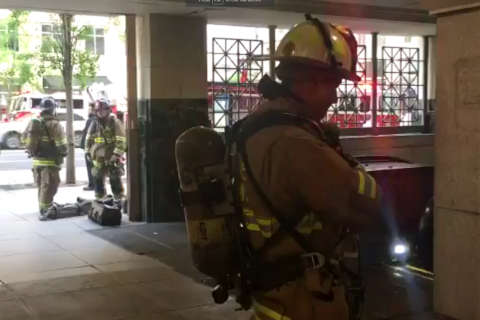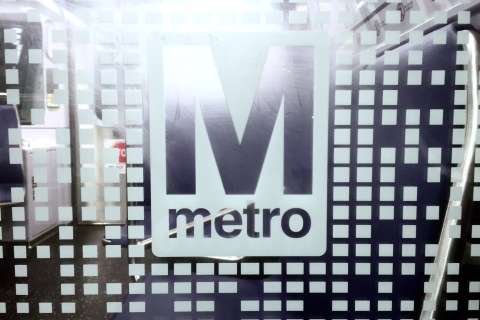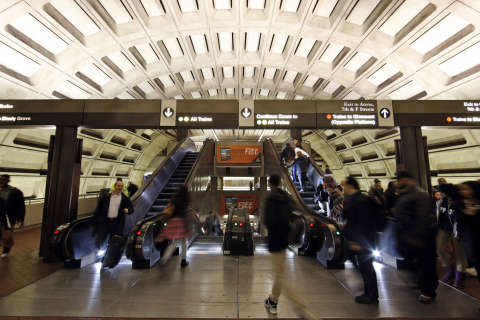WASHINGTON — Metro is moving up fastener and power testing and repairs after Thursday morning’s smoke incident that led to a downtown shutdown of the Red Line during rush hour.
It was the third time electricity found its way to the ground through a fastener in the area between Metro Center and Judiciary Square in the last two weeks. Metro had been aware of the issues in the area, Chief Safety Officer Pat Lavin said.
Metro Chief Operating Officer Joe Leader had personally walked the tracks in that area on Saturday.
“These fasteners are getting near the end of their useful life, and we’re going to have to start replacing them,” Lavin said. The fasteners are apparently 30 to 40 years old, and those replacement plans are now being accelerated.
In addition, train operators are now required to move more slowly when pulling out of stations on that part of the Red Line, Lavin said.
“It’s essentially when you pull out of a station, you’re not slamming your foot on the gas, it’s a more gradual increase. That should help restrain some of the traction power energy,” he said.
The rubber casing that provides insulation has apparently broken down on a number of the fasteners, which hold the rail in place in areas where the tracks rest on a concrete base as opposed to wooden rail ties.
Thursday morning’s smoke incident shut down service for more than an hour between Dupont Circle and Gallery Place. It prompted Metro to order a special look at the tracks Thursday night by upper-level engineers, who can help come up with plans for fixes. Power crews were also scheduled to test cables to ensure that they are not contributing to the stray current issues in the area.
When fasteners smolder, it is usually due to the negative return current that runs through the rails reaching the ground.
“It doesn’t always take the intended path,” Lavin explained. “In those cases, stray current is looking for an alternative path. In this incident … there was a component on the fastener that ignited.”
Thursday’s incident did not appear to be directly related to water in the tunnel. But Lavin said other spots in the troublesome stretch do have water issues that need to be addressed too, to ensure that water and electricity do not mix.
“This goes back to an aging system that hasn’t been maintained,” General Manager Paul Wiedefeld said.
He hopes Metro’s plan to cut back hours this summer can help, too, because plans call for increased inspections and testing then.
“The issues … are ones that we’ve been clear about — that they are not going to disappear overnight,” he said. “They were not made overnight, and we’ll have to continue to work through those. And that’s why we’ve requested and received the ability to get more hours in the system starting July 1.”
Compared with areas addressed in 24/7 work zones, however, Wiedefeld said each individual issue in the downtown core is not as systemic, so there are no plans for scheduled rush-hour shutdowns downtown.
Riders complain of limited communication
Many riders complained that in addition to the disruption of a shutdown Thursday morning, they did not have enough information.
Metro Riders Advisory Council Chair Katherine Kortum asked the Metro Board for quicker and increased communication in the future.
And Montgomery County Metro Board Member Kathy Porter suggested that Metro did much better communicating during this incident.
“I don’t know that the general consensus is that the communication was as quick or as thorough as would have been appreciated,” Kortum responded later.
“More communication would have been appreciated,” she said.







